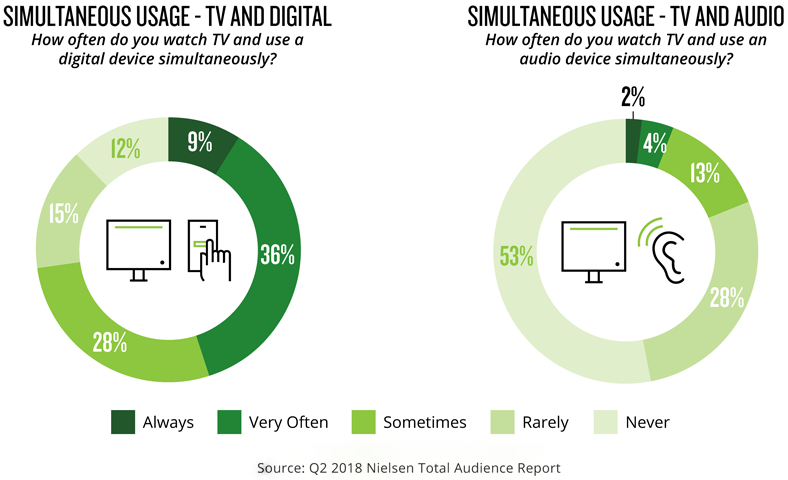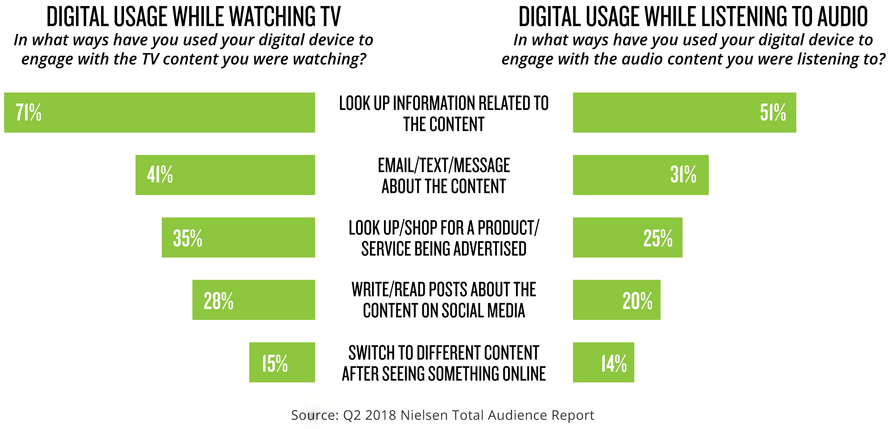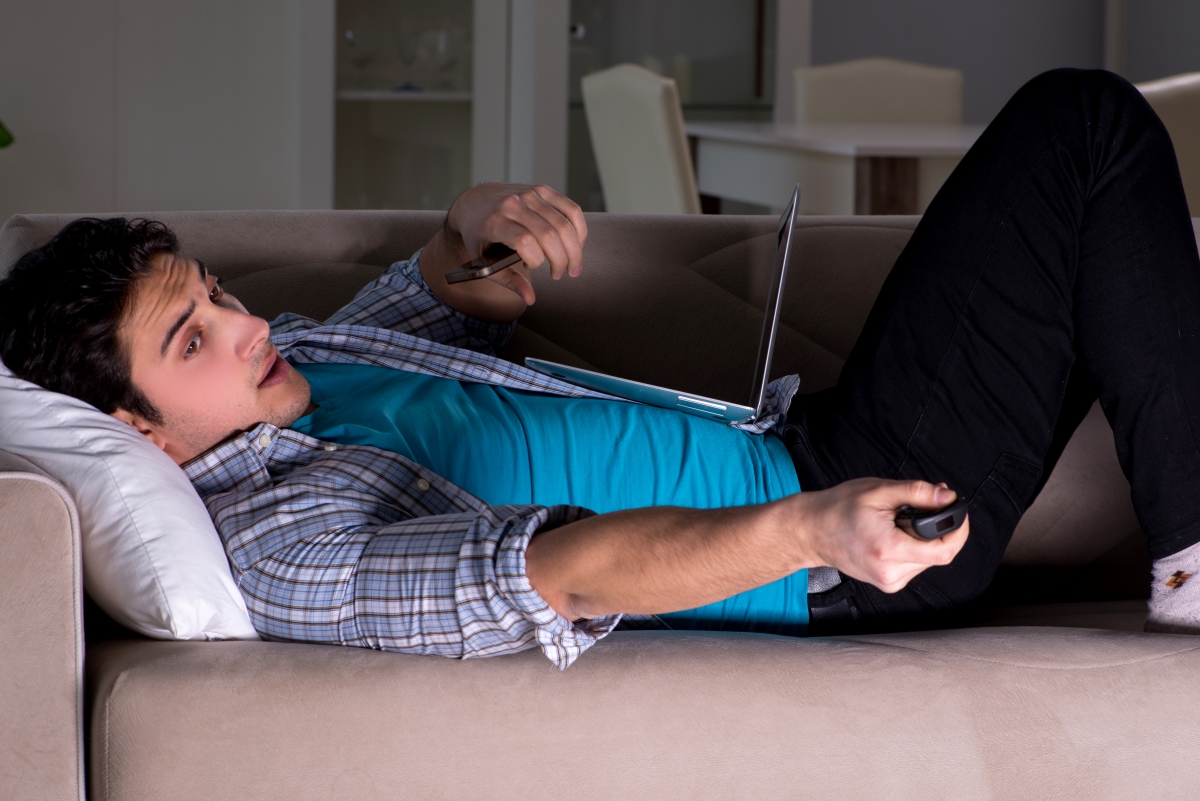Why it matters: As it turns out, content creators didn't need to conceive dedicated second screen experiences to get consumers to pick up another device while watching TV. The latest data from Nielsen shows that Americans are finding their own reasons to venture onto other platforms.
Americans have a serious craving for all things media. According to the latest Nielsen Total Audience Report, adults in the US spent nearly 10.5 hours consuming media daily in the second quarter of 2018.
With a finite number of hours to work with each day, many have resorted to multitasking to get the most out of their devices and time.

When asked about simultaneous device usage (watching TV and using a digital device like a smartphone at the same time), 28 percent of respondents said they "sometimes" do so while a much larger 36 percent said they do so "very often." Nearly 10 percent of those surveyed indicated they "always" use a digital device while watching television.
Only 19 percent of those questioned said they sometimes, very often or always use an audio device while watching TV. This makes sense considering audio requires more of a user's attention.

Nielsen's data indicates that most - 71 percent - are using a secondary device to look up information related to the content they are watching. Additionally, 41 percent said they use digital devices to e-mail / text / message others about the content they are watching while 29 percent write / read posts about said content on social media. A full 35 percent said they use secondary devices to search for products or services being advertised on TV.
Have you adopted second screen tendencies? I'll occasionally text a friend about something I'm watching or search for a fact but aside from this, I find it too distracting to multitask on my phone while watching TV.
